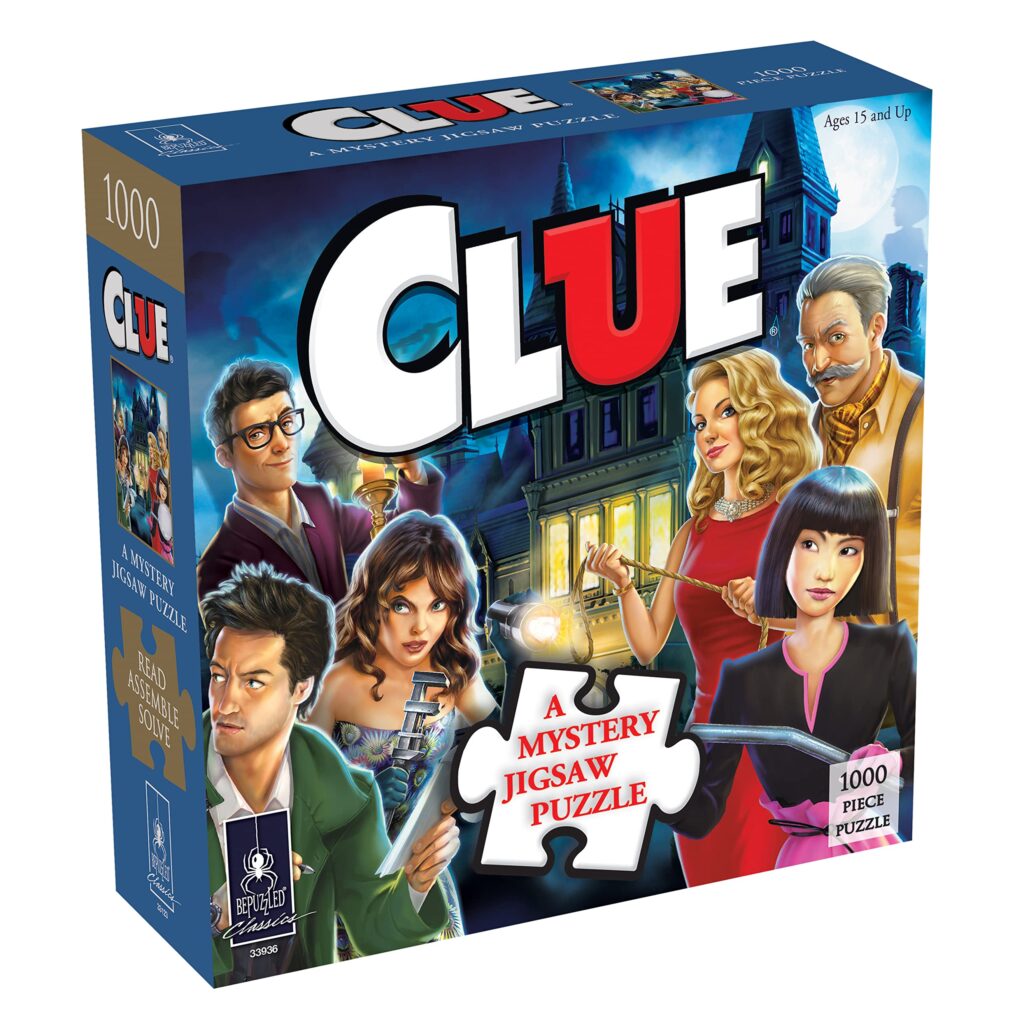Clue, or Cluedo, is a murder mystery board game for 3-6 players. To start, players choose a character token and place it on the game board, which is a floorplan of a mansion with different rooms. The game comes with several decks of cards that are shuffled, and one card from each deck is selected at random to determine the details of the murder mystery. On a player’s turn, they roll the dice and can make a suggestion by naming a suspect, weapon, and room. The player to their left must show them any cards mentioned in the suggestion. Players must use deductive reasoning, take notes, and use bluffs to gather information and solve the mystery. Clue is social in nature and is a classic, enjoyable game for players of all ages.
Solving the Mystery: A Review of the Popular Puzzle Game, Clue
Introduction
Clue, also known as Cluedo outside of North America, is a murder mystery board game designed for three to six players. The objective of the game is to determine who murdered the game’s victim, where the crime took place, and which weapon was used to commit the act. The game has been popular for decades, and its appeal lies not only in the deductive reasoning needed to solve the mystery, but in the potential for interaction and intrigue generated by the different player characters.
Gameplay
To set up the game, players choose a character token and place it on the starting square of the game board. The game board is a floor plan of a mansion, representing the scene of the crime, with each room connected by passages that allow players to move from one space to another. The game comes with several decks of cards, including suspect cards, weapon cards, and room cards. These are shuffled and one card from each deck is selected at random, determining the details of the game’s murder mystery. These three cards are then placed in a confidential file, and the remaining cards are dealt out among the players.
On a player’s turn, they roll the dice and move their token that number of spaces. They can then make a suggestion by naming a suspect, a weapon, and a room. The player to their left must then show them if they possess any of the cards mentioned in the suggestion. Play continues clockwise, with each player taking turns making suggestions and attempting to gather information. When a player thinks they have solved the mystery, they can make an accusation by stating who they believe the murderer is, where the crime was committed, and what the murder weapon was. If their accusation is correct, they win the game. If it is incorrect, they are out of the game, and the remaining players continue to play.
Strategy
One of the keys to winning Clue is to keep track of the information gathered throughout the game. Players should take notes on what cards they receive and what cards they show to other players during suggestions. They can use this information to eliminate possibilities and narrow down the suspect, weapon, and room to determine the correct solution to the mystery.
Players can also use bluffs and false suggestions to mislead other players and throw them off the trail of the real culprit. Building trust with other players can be an effective strategy, as they may be more willing to share information with players they trust.
It is important to note that players should be careful not to reveal too much information during the game, as other players can use what they know to solve the mystery before them.
Analysis
Clue is a game that requires both deductive reasoning and a bit of luck. The luck component comes from the random card draws at the beginning of the game, which determine the details of the murder mystery. However, the majority of the game is based on deductive reasoning and the process of elimination.
The game is also social in nature, as players must interact with each other and rely on their observations of each other’s behavior to gather information. Players who are skilled at reading body language and detecting lies may have an advantage in this game.
Although the game is designed for three to six players, it can be played with just two players by removing some of the cards from the game. However, the game is more enjoyable when played with a larger group, as the potential for interaction and intrigue is greater.
Conclusion
Clue is a classic board game that has stood the test of time. Its combination of deductive reasoning and social interaction make it a fun and engaging game for players of all ages. The game’s replay value is high, as the different combinations of suspect, weapon, and room ensure that each game is unique. With its popularity spanning decades, Clue has solidified its place as a staple in the board game community.
